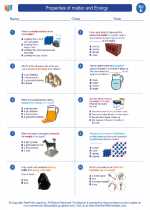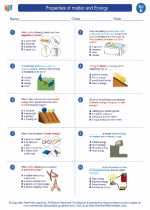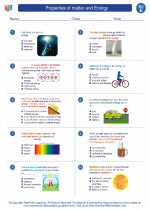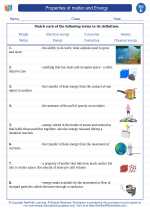Mirrors
Mirrors are smooth, shiny surfaces that reflect light. They are commonly used in everyday life, from personal grooming to scientific experiments. There are different types of mirrors, including plane mirrors, concave mirrors, and convex mirrors, each with unique properties and uses.
Types of Mirrors
- Plane Mirrors: These mirrors have a flat, reflective surface and produce images that are the same size as the object and appear to be the same distance behind the mirror as the object is in front of it.
- Concave Mirrors: These mirrors curve inward and can produce both real and virtual images depending on the location of the object in relation to the mirror. They are commonly used in reflecting telescopes and headlights.
- Convex Mirrors: These mirrors curve outward and always produce virtual images that are smaller than the actual object. They are often used in security mirrors and as side-view mirrors on vehicles.
How Mirrors Work
When light hits a mirror, it is reflected at the same angle at which it hit the mirror's surface. This is known as the law of reflection. The smoothness of the mirror's surface allows the reflected light to create a clear image.
Study Guide
- What are the three main types of mirrors?
- Describe the properties and uses of each type of mirror.
- Explain the law of reflection and how it applies to mirrors.
- Provide examples of everyday objects or devices that use mirrors.
- Compare and contrast the images produced by concave and convex mirrors.
[Mirrors] Related Worksheets and Study Guides:
.◂Science Worksheets and Study Guides Fifth Grade. Properties of matter and Energy
Study Guide Properties of matter and Energy
Properties of matter and Energy  Worksheet/Answer key
Worksheet/Answer key Properties of matter and Energy
Properties of matter and Energy  Worksheet/Answer key
Worksheet/Answer key Properties of matter and Energy
Properties of matter and Energy  Worksheet/Answer key
Worksheet/Answer key Properties of matter and Energy
Properties of matter and Energy  Vocabulary/Answer key
Vocabulary/Answer key Properties of matter and Energy
Properties of matter and Energy  Vocabulary/Answer key
Vocabulary/Answer key Properties of matter and Energy
Properties of matter and Energy 

 Worksheet/Answer key
Worksheet/Answer key
 Worksheet/Answer key
Worksheet/Answer key
 Worksheet/Answer key
Worksheet/Answer key
 Vocabulary/Answer key
Vocabulary/Answer key
 Vocabulary/Answer key
Vocabulary/Answer key

The resources above cover the following skills:
PHYSICAL SCIENCE (NGSS)
Matter and Its Interactions
Students who demonstrate understanding can:
Develop a model to describe that matter is made of particles too small to be seen.